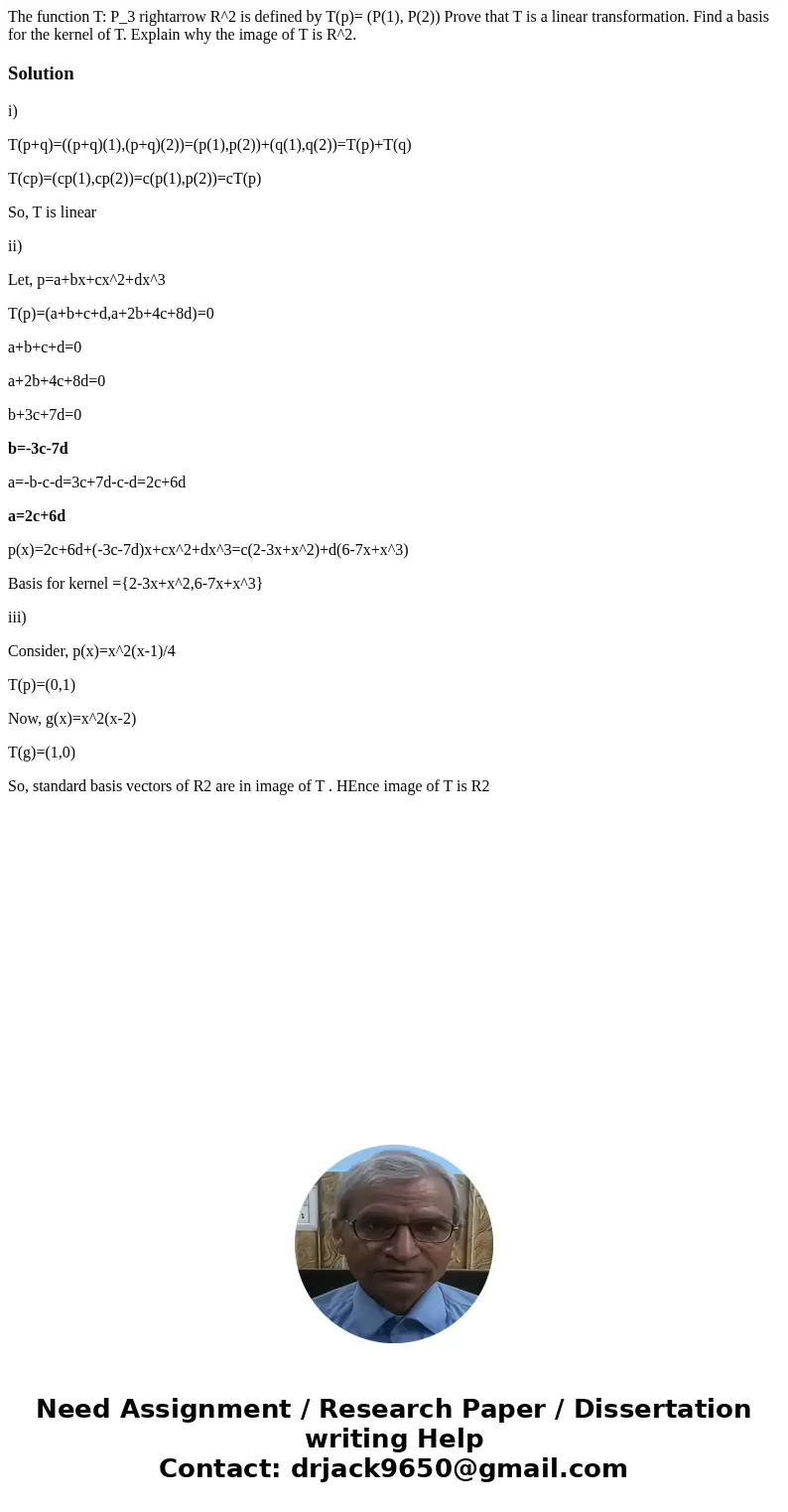The function T P3 rightarrow R2 is defined by Tp P1 P2 Prove
The function T: P_3 rightarrow R^2 is defined by T(p)= (P(1), P(2)) Prove that T is a linear transformation. Find a basis for the kernel of T. Explain why the image of T is R^2. 
Solution
i)
T(p+q)=((p+q)(1),(p+q)(2))=(p(1),p(2))+(q(1),q(2))=T(p)+T(q)
T(cp)=(cp(1),cp(2))=c(p(1),p(2))=cT(p)
So, T is linear
ii)
Let, p=a+bx+cx^2+dx^3
T(p)=(a+b+c+d,a+2b+4c+8d)=0
a+b+c+d=0
a+2b+4c+8d=0
b+3c+7d=0
b=-3c-7d
a=-b-c-d=3c+7d-c-d=2c+6d
a=2c+6d
p(x)=2c+6d+(-3c-7d)x+cx^2+dx^3=c(2-3x+x^2)+d(6-7x+x^3)
Basis for kernel ={2-3x+x^2,6-7x+x^3}
iii)
Consider, p(x)=x^2(x-1)/4
T(p)=(0,1)
Now, g(x)=x^2(x-2)
T(g)=(1,0)
So, standard basis vectors of R2 are in image of T . HEnce image of T is R2

 Homework Sourse
Homework Sourse